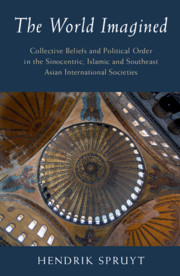 The World Imagined
The World Imagined The Ottoman, Safavid, and Mughal Empires and the Islamic Ecumene
from Part III - The Islamic Cultural–Historical Community
Published online by Cambridge University Press: 18 June 2020
In the Islamic Ecumene shared religious principles intertwined with other foundational beliefs, which harkened back to the Turkic-Mongol tradition of the Islamic empires, providing cultural unity. The Islamic World constituted an international society despite the absence of a clear hegemonic power. Institutions, laws, and collective beliefs embodied in everyday practices, rituals, and even the design of buildings and cities provided unity in a heterogeneous and diverse Islamic ecumene.
To save this book to your Kindle, first ensure [email protected] is added to your Approved Personal Document E-mail List under your Personal Document Settings on the Manage Your Content and Devices page of your Amazon account. Then enter the ‘name’ part of your Kindle email address below. Find out more about saving to your Kindle.
Note you can select to save to either the @free.kindle.com or @kindle.com variations. ‘@free.kindle.com’ emails are free but can only be saved to your device when it is connected to wi-fi. ‘@kindle.com’ emails can be delivered even when you are not connected to wi-fi, but note that service fees apply.
Find out more about the Kindle Personal Document Service.
To save content items to your account, please confirm that you agree to abide by our usage policies. If this is the first time you use this feature, you will be asked to authorise Cambridge Core to connect with your account. Find out more about saving content to Dropbox.
To save content items to your account, please confirm that you agree to abide by our usage policies. If this is the first time you use this feature, you will be asked to authorise Cambridge Core to connect with your account. Find out more about saving content to Google Drive.